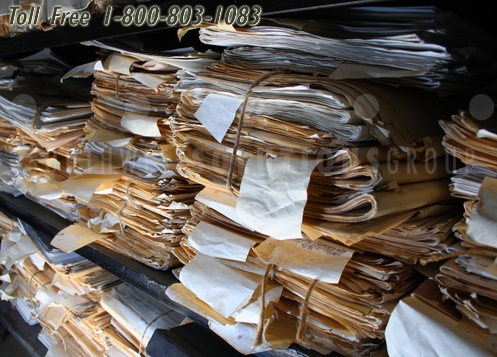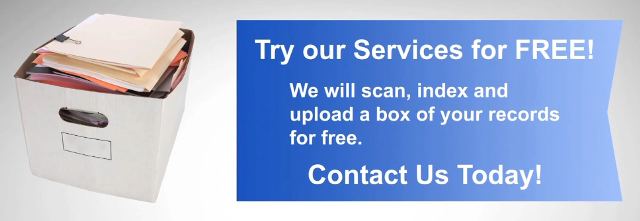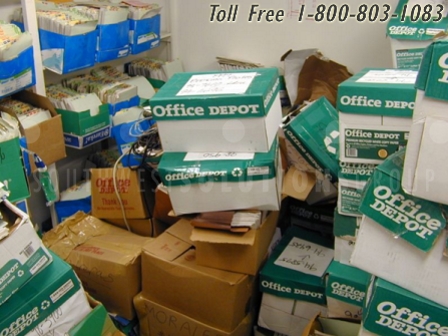document scanning FAQ Part 1 (Read FAQ Part 2)
 According to a story published on Entrepreneur.com, for every 30 copies printed in an office, 39% of them are just thrown away. On top of that, it costs about $25,000 to fill a four-drawer cabinet that holds 15-20,000 files, and $2,000 per year to maintain it. Paper document management and the labor associated with it is the largest cost to most organizations, which is why many companies are moving at least partially to digital documents to save on paper, labor, and space costs. But there’s a lot about document scanning to take in; for this reason, we’ve compiled a list of digital conversion and document scanning frequently asked questions (FAQ) to help you get started. Learn more about high-speed document scanning services.
According to a story published on Entrepreneur.com, for every 30 copies printed in an office, 39% of them are just thrown away. On top of that, it costs about $25,000 to fill a four-drawer cabinet that holds 15-20,000 files, and $2,000 per year to maintain it. Paper document management and the labor associated with it is the largest cost to most organizations, which is why many companies are moving at least partially to digital documents to save on paper, labor, and space costs. But there’s a lot about document scanning to take in; for this reason, we’ve compiled a list of digital conversion and document scanning frequently asked questions (FAQ) to help you get started. Learn more about high-speed document scanning services.
Q: How do I know you won’t lose any of my documents or mix them up?
A: The scanning team implements more than one process to ensure that your documents are secured and remain in the order we receive them. The team applies bar codes and tracks the files and boxes throughout the whole process. Team members also work with only one file at a time to eliminate the possibility of documents getting mixed up with others. Our quality control process also validates the page count and order.
Q: Do we need to supply you with equipment or supplies?
A: No. We provide all of our own equipment and supplies, including printers, production scanners, computers, servers, boxes, laptops, software, etc.
Q: How long will the project take to complete?
A: It depends on the available space within your facility and how many documents you have. We can ramp up our progress up or down and schedule the project according to your needs.
Q: Who has access to records during the conversion process?
A: Documents are only accessible to team members and the manager assigned to your project. Each team member has their own unique ID that is captured during each task to keep track of who has touched, looked at, scanned, etc. each document at every stage of the project.
Q: Do we need to pack our records into boxes before they’re scanned?
A: Our standard operating procedure requires every file/document to be contained and inventoried to a specific box number. If you’re short on time and resources, then we can provide the boxes and box and inventory your records for you.
Q: We have very rigorous security standards. Does your scanning staff comply to regulations?
A: Yes. All staff is subject to a complete background check and drug test, and we comply with HIPAA and CJIS standards.
Q: Can large format documents be scanned?
A: Yes. We can scan all types of large format documents, including architectural or engineering drawings and maps.
Q: What is your approach and methodology for a document scanning project?
A: We start by asking questions—a lot of them. We first want to understand your objectives, how you normally do business, what’s most important to you and your company, and what your vision is for a successful outcome. Then, we benchmark your preferences against RIM (records and information management) principles, looking at workflow, compliance, retention, regulatory items, and security. Then we develop a plan that works with your budget and your future planning needs.
Q: Do you sub-contract to local vendors?
A: Never. Your project stays with us and only us through the entire process.
Q: What if I need a record during the conversion?
A: Access is always available throughout the processing project. We’ll retrieve and re-file anything you need during the conversion.
Q: How do I know what format I want the images to be scanned in?
A: We use TIFF and PDF. Here are some factors to consider to help you decide:
When to use TIFF over PDF:
- You don’t OCR (optical character recognition) the images or want to keep them separate.
- Storage size is an important factor.
- Everyone who needs to see the image has access to viewing software.
- You need to maintain compatibility with WANG annotation format.
- You have very large pages that need to be accessed in pieces; TIFF supports a tiled mode that allows fast access to parts of an image.
When to use PDF over TIFF:
- You want to OCR the images so you will always be able to search the document.
- Your organization mandates an archival format like PDF/A for compliance purposes.
- You want users to be able to view the documents without installing special software; most users likely have a PDF viewer already.
- You annotate the images and want users to be able to see them.
Q: Can the documents be imported into our document management system?
A: Yes, including SharePoint, SAP, EMR, and other business software. It’s important for us to know what application you will use after scanning, and we test the entire process through to completion before we start production.
Q: If the originals are poor quality, will the images be legible?
A: We can sometimes improve the legibility of documents with various enhancement settings, but this is not always the case. The standard objective is that the deliverable be equal to or of greater quality the original. In most cases, we recommend the use of a “poor quality original” identifier somewhere on the document if possible. If an image appears to be of poor quality, quality control techs will compare it to the original; if the scanned image is as good or better, the document will be stamped as “Poor Original.” For documents that can’t be stamped, notations and/or poor quality sheets can be inserted.
Q: Will I be charged for documents that require rescanning?
A: No. Our software only counts images that have been approved for release, so rescans aren’t included in the image count.
contact us for Document Record & File Scanning
Southwest Solutions Group® provides document, record, and file scanning services to all types of businesses, and we will even scan and upload a box of your records for free so you can try our services before you buy. For more information or to speak with a document scanning specialist, call us at 1-800-803-1083 or send us a message today.



 Document Scanning Services
Document Scanning Services
 Virtual Labels: Info Management
Virtual Labels: Info Management




